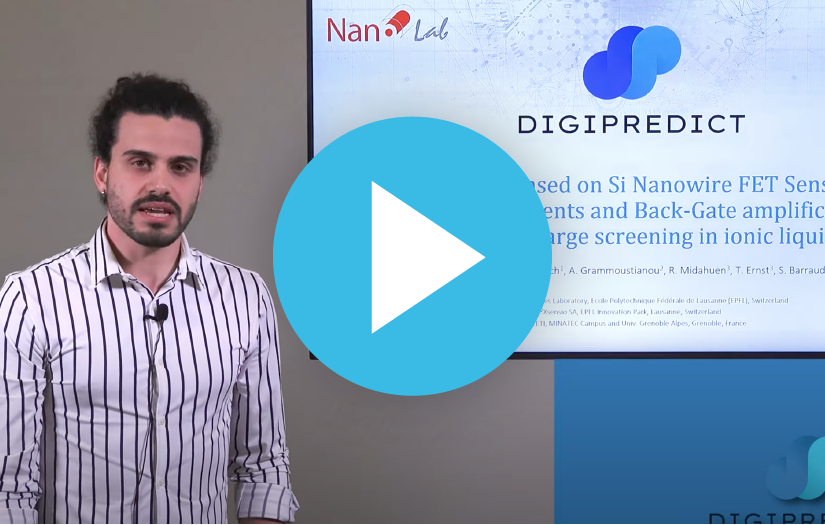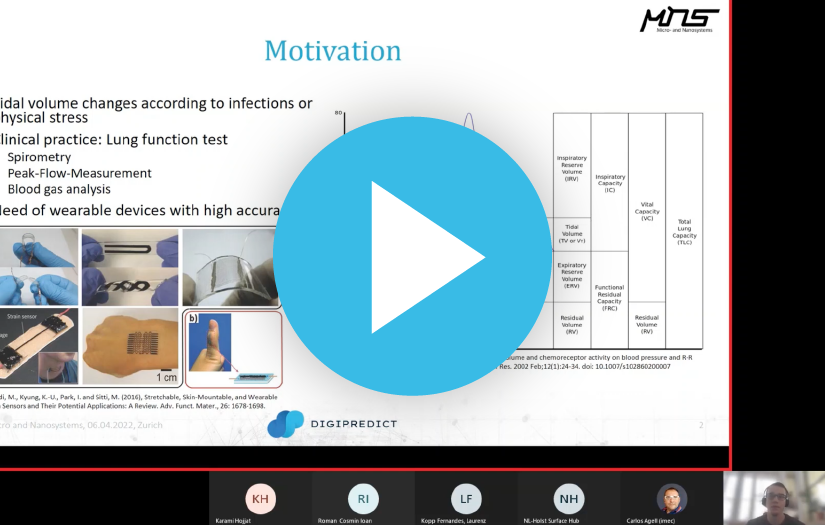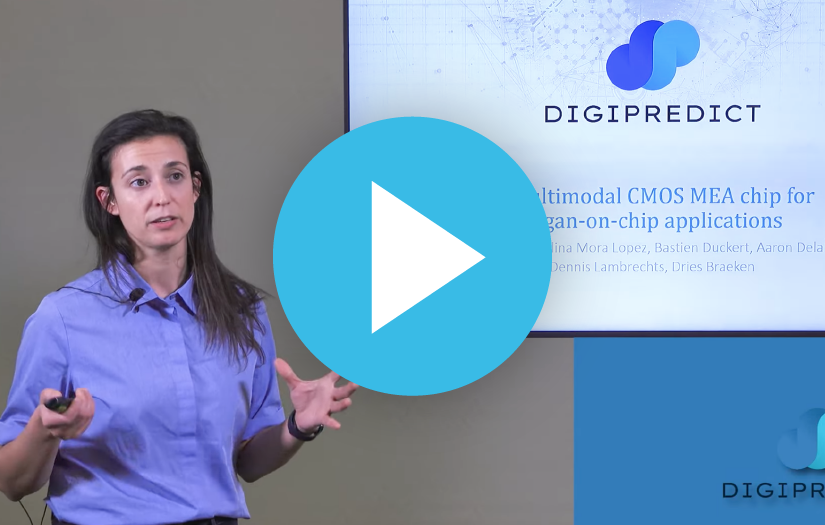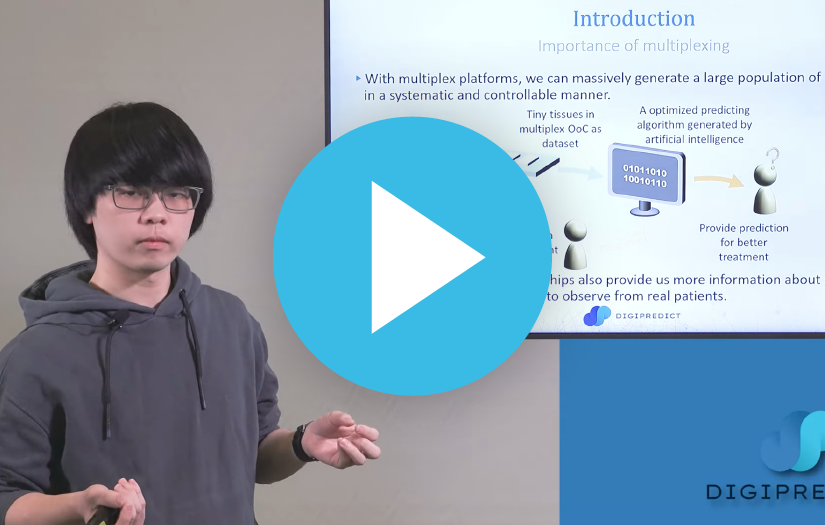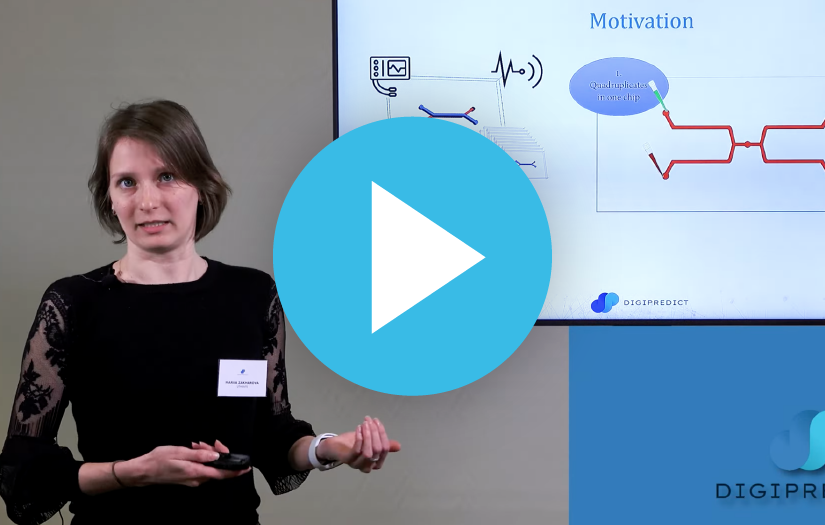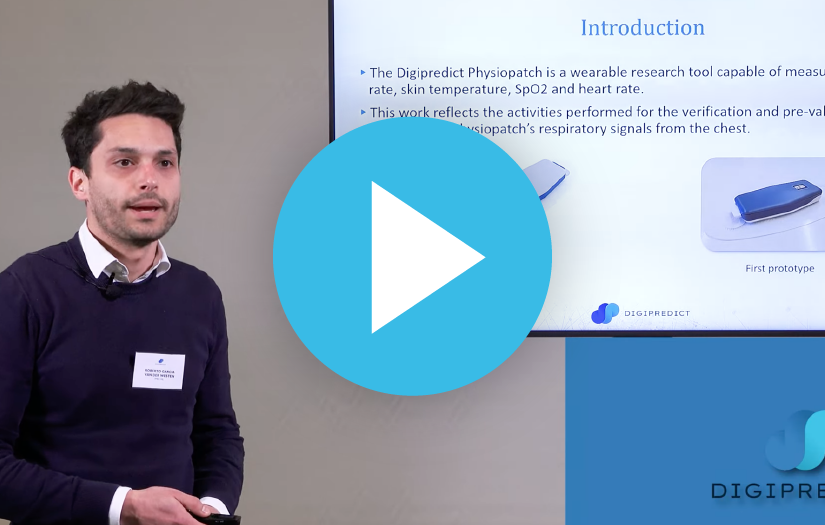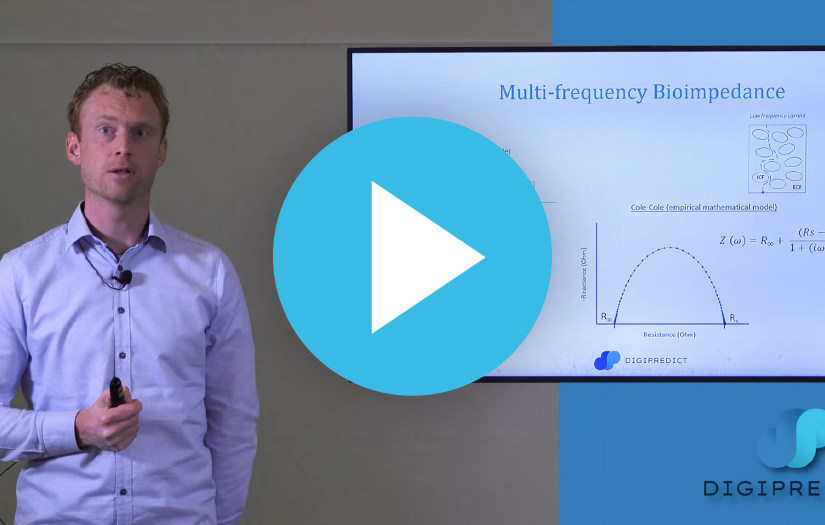DIGIPREDICT project outcomes
This page presents the main scientific outcomes of the DIGIPREDICT project, reflecting its impact as a pionneer in the field of digital twin for healthcare applications.
Project public events
Public events organized by DIGIPREDICT
Project introductory video
Below you will find a short video explaining the main features of the DIGIPREDICT project.
DIGIPREDICT video series
DIGIPREDICT brings together various fields of expertise with one single goal: digital twin to predict the progression of disease and the need for early intervention in infectious and cardiovascular diseases.
Discover the various aspects of the DIGIPREDICT research through our video series.
Design and simulation of a CNT strain sensor with low mechanical cross-sensitivity.
Development of an automatic, modularized and multiplexed heart-on-a-chip platform
Quadro-channel organ-on-chip for modelling and studying the blood-brain barrier
Scientific publications
1.
Use of a Silicon Microneedle Chip-Based Device for the Extraction and Subsequent Analysis of Dermal Interstitial Fluid in Heart Failure Patients.
Diagnostics 15, 989 (2025). doi: 10.3390/diagnostics15080989. Archive: scilit2.
Integrated Silicon-On-Insulator Based Mesh Membrane for Continuous Monitoring in Organs-on-a-chip.
in 2024 IEEE SENSORS 1–4 (IEEE, 2024). doi: 10.1109/SENSORS60989.2024.10784460. Archive: utwente3.
How to Count Coughs: An Event-Based Framework for Evaluating Automatic Cough Detection Algorithm Performance.
in 2024 IEEE 20th International Conference on Body Sensor Networks (BSN) 1–4 (IEEE, 2024). doi: 10.1109/BSN63547.2024.10780617. Archive: arXiv4.
Intrinsic User-Centric Interpretability through Global Mixture of Experts.
in (2024). https://openreview.net/forum?id=wDcunIOAOk.5.
InterpretCC: Intrinsic User-Centric Interpretability through Global Mixture of Experts.
(2024). doi: 10.48550/arXiv.2402.029336.
Tunable Dual Mode Carbon Nanotube Strain Gauge.
in 2024 IEEE 37th International Conference on Micro Electro Mechanical Systems (MEMS) 931–934 (IEEE, 2024). doi: 10.1109/MEMS58180.2024.104394277.
TEE4EHR: Transformer event encoder for better representation learning in electronic health records.
Artificial Intelligence in Medicine 154, 102903 (2024). doi: 10.1016/j.artmed.2024.102903. Archive: arXiv8.
TimEHR: Image-based Time Series Generation for Electronic Health Records.
(2024). doi: 10.48550/ARXIV.2402.06318. Archive: arXiv9.
Point-process-based Representation Learning for Electronic Health Records.
in 2023 IEEE EMBS International Conference on Biomedical and Health Informatics (BHI) 1–4 (IEEE, 2023). doi: 10.1109/BHI58575.2023.10313499. Archive: Infoscience10.
pH Quantification in Human Dermal Interstitial Fluid Using Ultra-Thin SOI Silicon Nanowire ISFETs and a High-Sensitivity Constant-Current Approach.
Biosensors 13, 908 (2023). doi: 10.3390/bios1310090811.
Ultra-High Sensitivity Silicon Nanowire Array Biosensor Based on a Constant-Current Method for Continuous Real-Time pH and Protein Monitoring in Interstitial Fluid.
in ESSCIRC 2023- IEEE 49th European Solid State Circuits Conference (ESSCIRC) 153–156 (IEEE, 2023). doi: 10.1109/ESSCIRC59616.2023.1026873112.
Model-Based ISO 14971 Risk Management of EEG-Based Medical Devices.
in 2023 45th Annual International Conference of the IEEE Engineering in Medicine & Biology Society (EMBC) 1–7 (IEEE, 2023). doi: 10.1109/EMBC40787.2023.10340131. Archive: 13.
Prognostic models in COVID-19 infection that predict severity: a systematic review.
European Journal of Epidemiology (2023). doi: 10.1007/s10654-023-00973-x. Archive: PMC14.
Vacuum-sealed silicon photonic MEMS tunable ring resonator with an independent control over coupling and phase.
Optics Express 31, 6540 (2023). doi: 10.1364/OE.48021915.
A Multimodal Dataset for Automatic Edge-AI Cough Detection.
in (IEEE, 2023). doi: 10.5281/ZENODO.7562332. Archive: Zenodo16.
A Multichannel Electrochemical Sensor Interface IC for Bioreactor Monitoring.
IEEE Transactions on Biomedical Circuits and Systems 1–9 (2023). doi: 10.1109/TBCAS.2023.3315480. Archive: Zenodo17.
A semi-supervised algorithm for improving the consistency of crowdsourced datasets: The COVID-19 case study on respiratory disorder classification.
Computer Methods and Programs in Biomedicine 241, 107743 (2023). doi: 10.1016/j.cmpb.2023.107743. Archive: arXiv18.
Event-based sampled ECG morphology reconstruction through self-similarity.
Computer Methods and Programs in Biomedicine 240, 107712 (2023). doi: 10.1016/j.cmpb.2023.107712. Archive: arXiv19.
An Error-Based Approximation Sensing Circuit for Event-Triggered Low-Power Wearable Sensors.
IEEE Journal on Emerging and Selected Topics in Circuits and Systems 13, 489–501 (2023). doi: 10.1109/JETCAS.2023.3269623. Archive: arXiv20.
Label-Free C-Reactive Protein Si Nanowire FET Sensor Arrays With Super-Nernstian Back-Gate Operation.
IEEE Transactions on Electron Devices 1–7 (2022). doi: 10.1109/TED.2022.3144108. Archive: Infoscience21.
Double-Gate Si Nanowire FET Sensor Arrays For Label-Free C-Reactive Protein detection enabled by antibodies fragments and pseudo-super-Nernstian back-gate operation.
in 2021 IEEE International Electron Devices Meeting (IEDM) 16.2.1–16.2.4 (IEEE, 2021). doi: 10.1109/IEDM19574.2021.9720670. Archive: Infoscience22.
An Improved Analysis of Gradient Tracking for Decentralized Machine Learning.
in Advances in Neural Information Processing Systems 34, (NIPS, 2021). Archive: arXiv23.
RelaySum for Decentralized Deep Learning on Heterogeneous Data.
in Advances in Neural Information Processing Systems 34, (NIPS, 2021). Archive: arXiv24.
Consensus Control for Decentralized Deep Learning.
in Proceedings of the 38th International Conference on Machine Learning 139, 5686–5696 (PMLR, 2021). Archive: arXiv25.
Quasi-Global Momentum: Accelerating Decentralized Deep Learning on Heterogeneous Data.
in Proceedings of the 38th International Conference on Machine Learning 139, 6654–6665 (PMLR, 2021). Archive: Infoscience


